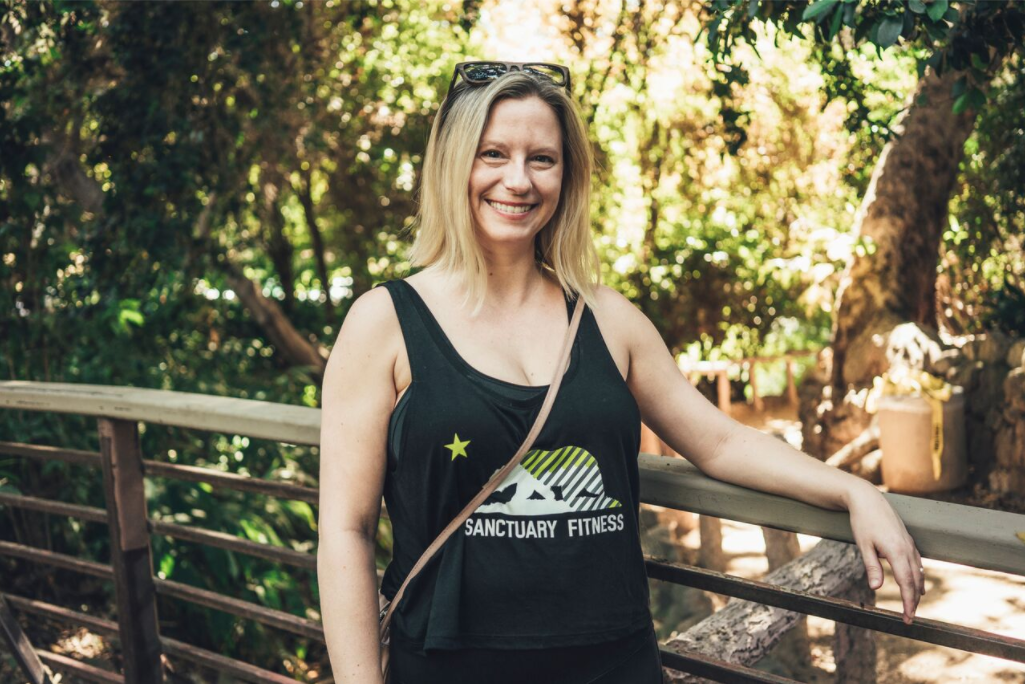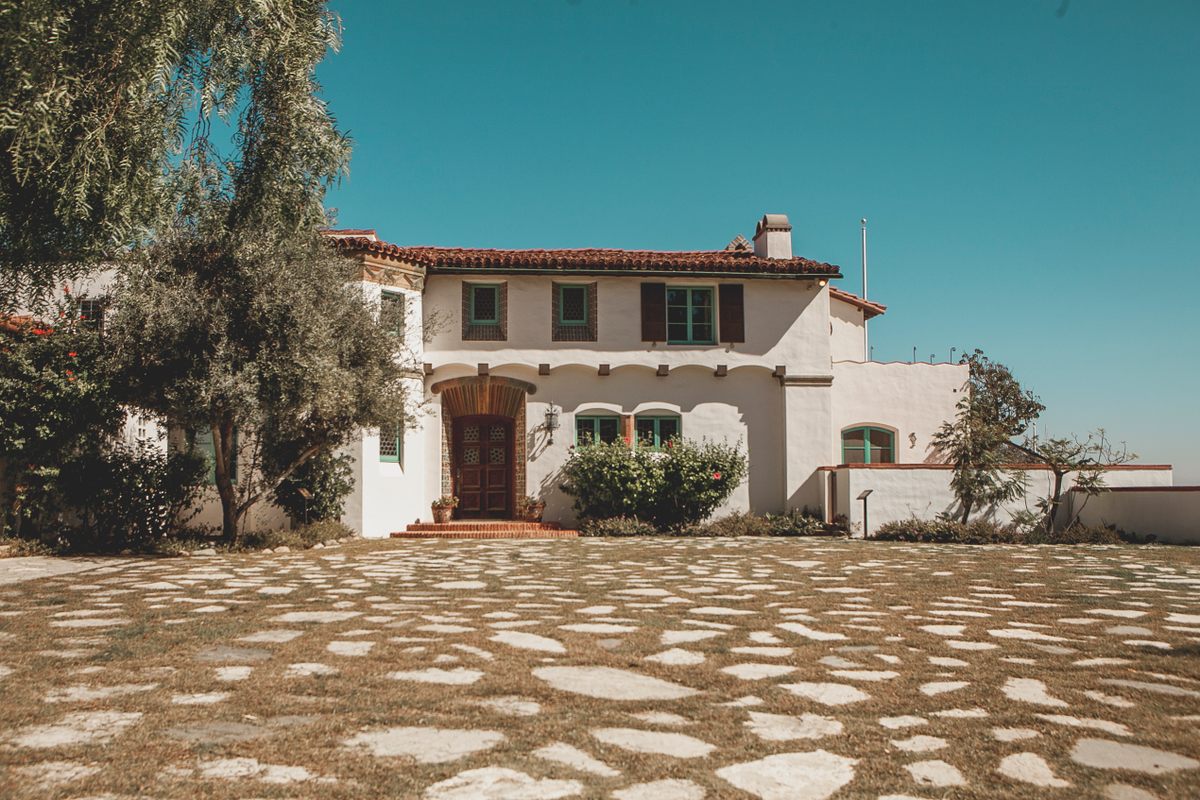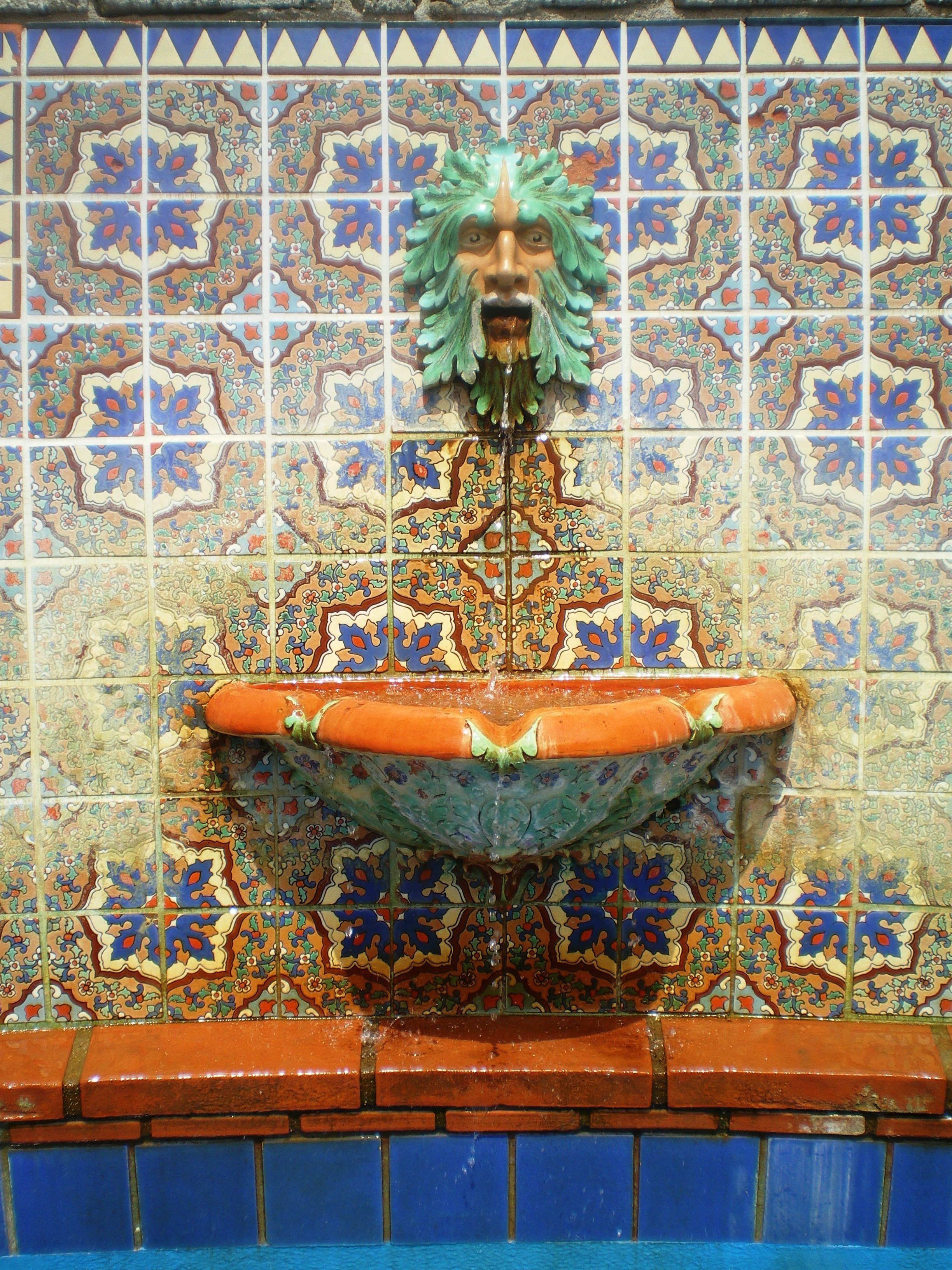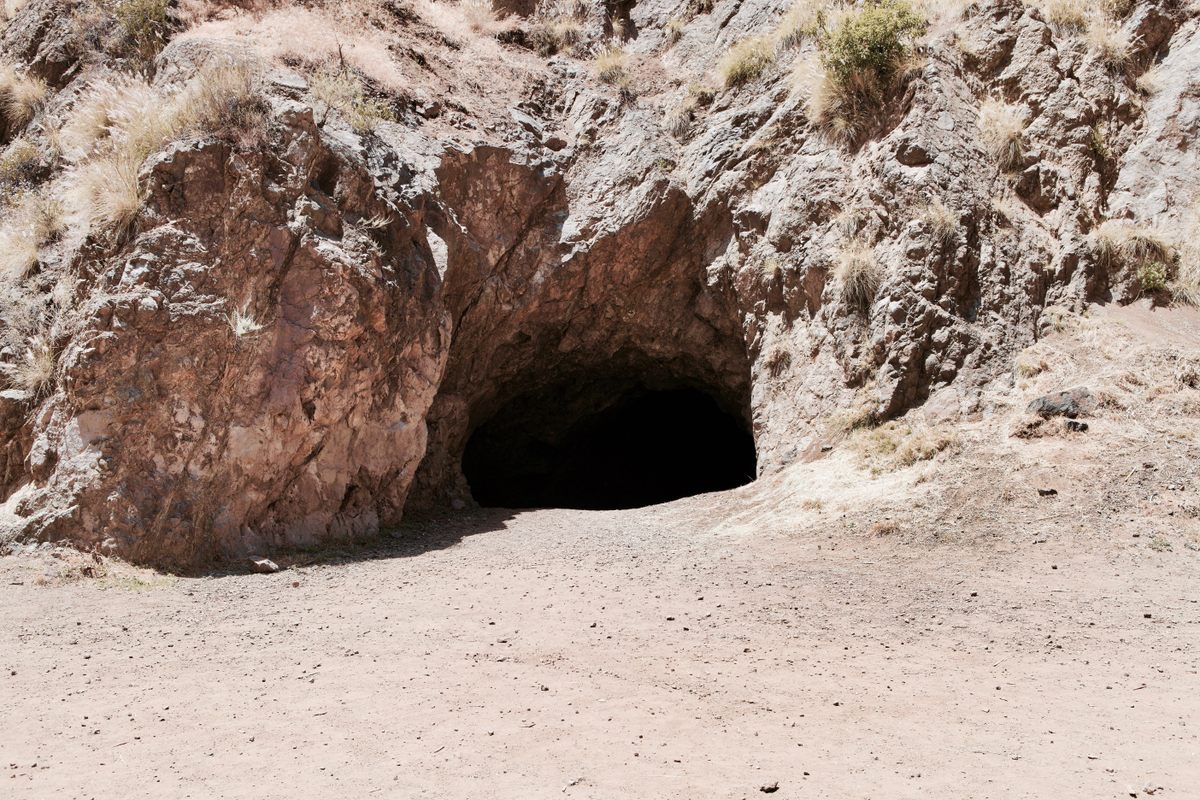How a History Buff Spends 3 Days Outdoors in Los Angeles
Historian Hadley Hall-Meares shares her adventurous agenda for Three Obscure Days in L.A.
The outdoors are always enviably within-reach in Los Angeles. Angelenos are privileged with an abundance of opportunities to escape the commotion of city life without venturing beyond city limits. And in addition their obvious beauty, the mountains, shoreline, parks, and trails of Los Angeles have great stories behind them. Some of the best places to discover relics of the city’s past exist in nature.
Nobody knows this better than Hadley Meares, a local journalist, tour leader, and Atlas Obscura field agent with an intersectional expertise in nature and Los Angeles history.

“I absolutely adore hiking in Los Angeles,” says Meares. “The freedom of being able to hike comfortably in a tank top in February—it makes nature more of a friend than a foe, and makes hiking a casual, often social event.”
With Meares as our guide, we’ve put together a three-day itinerary of Los Angeles’ best outdoor offerings as part of a new feature, Three Obscure Days. These excursions are sure to satisfy your wanderlust, whether you’re looking to break a sweat or simply enjoy a gulp of fresh air.
Day 1 Agenda:
-
Explore mysterious ruins on a hike through Murphy Ranch
-
Take a stroll on the Malibu Lagoon
-
Grab a picnic lunch at Malibu Kitchen & Gourmet
-
Visit the historic Adamson House

Murphy Ranch Trail
Begin your journey in the posh neighborhood of Rustic Canyon, where a trailhead marks the start of a path that leads hikers through the Santa Monica mountains to the foundational ruins of a mysterious complex.
The trail begins on a paved road, where you’ll encounter the neighborhood’s residents walking their dogs or taking a bike ride. About a third of the way through the roughly four-mile course, the paved road ends and fellow travelers dwindle. Unusual sights (including a large water tower, a dilapidated barn, and a hulking, boarded-over garage) begin to pop up as the path descends to the ruins of Murphy Ranch.

The grounds’ curious history began in 1933, when Norman and Winona Stephens purchased 50 acres in the Pacific Palisades to construct a massive estate. Details about the couple are sparse, but an affidavit written at the time of the land’s sale alleges that at some point, Winona had fallen under the spell of a charismatic self-proclaimed mystic referred to only as “Herr Schmidt.” Schmidt was believed to have had Nazi sympathies, and the story goes that he convinced the Stephenses to build a sort of White House-cum-bunker in the secluded hills as a future U.S. home for the Nazi regime, should Germany prevail in World War II. Adding to the intrigue, witnesses at the time reported seeing patrolling men in the uniform of the Silver Shirts (an American fascist group) near the compound.
Meares offers an alternative source for the wild lore surrounding this place: Boy Scouts. Farther down the paved road is a Boy Scout camp that was constructed in the 1940s. As inscrutable as the Stephenses intentions remain, it’s quite possible that the story’s most salacious details originated around a campfire.

Malibu Lagoon State Beach
Take a short drive from Rustic Canyon down to Malibu for a refreshing stroll near the shore at the Malibu Lagoon State Beach. A handsome boardwalk equipped with seating areas and picnic tables leads visitors on a loop near the beach’s access point, offering views of the ocean and a nearby neighborhood of towering mansions.
The boardwalk circles a natural area that boasts a rich buffet of plant and animal life. Elegant herons waltz nearby while sprightly fish jump over the waters’ edges with riveting frequency. Given the area’s natural serenity, it’s a surprisingly dynamic scene. Helpful informational signs along the path’s course allow visitors the chance to learn about the natural forces on display.
For hikers who have also worked up an appetite, there are plenty of eating options near the boardwalk’s entry point at the Malibu Country Mart. For a quick bite that you can take to the boardwalk or the beach, we recommend Malibu Kitchen & Gourmet, a country deli with hearty sandwiches as well as healthy options and sweets.

Adamson House
Just a five-minute walk from the boardwalk, the Adamson House is a work of architectural beauty with a fascinating history that dates back to Malibu’s Spanish settlement.
At the turn of the century, the Boston-bred Rindge family purchased over 13,000 of acres of land that included Spanish-settled territory and encompassed the entirety of Malibu. On “Rindge Ranch,” the wealthy couple created a secluded oasis for their family.
The family grew when the eldest daughter, Rhoda Rindge, fell in love with Merritt Adamson, a dashing cowhand who worked on the grounds. The two were married, and the palatial Adamson House was constructed in 1929 as a gift to the newlyweds.
Designed by the famed architect Stiles O. Clements, the structure is notable for its dreamily Mediterranean ambience, personalized features (including paintings of the Rindge daughters’ faces on wooden beams in the living room), and most notably, its use of decorative tiles. Produced by Malibu Potteries (the Rindge’s own business), the Adamson House has been called the “Taj Mahal of tile.”

The Rindge family’s empire eventually faded amid local land disputes and the untimely death of Merritt Adamson. But as a monument to love (and, as Meares points out, “the first beach house in Malibu”), the estate is no less impressive today.
Day 2 Agenda:
-
Eat breakfast at The Trails Cafe
-
Meander through Fern Dell’s intriguing landscape
-
Take a hike through to the Griffith Observatory
-
See what’s on display at the Griffith Observatory

The Trails Cafe
Start the day in Griffith Park at The Trails Cafe, a spot L.A. Weekly once characterized as a place where Julia Child and John Muir would have met for lunch. Centrally located near some of Griffith Park’s best attractions, the verdant, outdoor spot serves sandwiches, pastries, and coffee that are as delectable as the cafe’s scenery.
Justifiably, this spot is immensely popular. Hikers would do well to begin their day early at The Trails or to bake in some extra time for a bite that’s worth the wait.

Fern Dell Nature Museum
The Fern Dell (alternatively spelled “Ferndell”) Nature Museum is a short walk from The Trails Cafe, at Los Feliz Boulevard and Fern Dell Drive. Though not a museum in the typical sense, the Fern Dell nature area offers a trove of unusual landscaping details that together form a picture of the city parks department’s Babylon-esque vision in the early part of the 20th century.
Originally inhabited by the native Tongva/Gabrielino people, the area began its transformation into the place it is today in 1914, when the city began to plant tropical greenery (including ferns) in the ravine. Through the Great Depression, the city continued to build out the lush environs, adding terraces, faux-lagoons, waterfalls, and rustic bridges to the park. Today, the area is an expansive, winding network of 1920s masonry designed to appear ancient.
Since the 1970s and 1980s, Fern Dell’s maintenance has fallen somewhat by the wayside. The waters run stagnant in some spots and the boulders and gnarled branches that comprise its primordial look no longer appear as authentic as they once did. Still, Fern Dell possesses extraordinary natural beauty. As an abiding relic, it’s a captivating peek into the evolution of a public work.

Griffith Observatory
From Fern Dell, one can follow signs to the well-trodden path up Mount Hollywood to the Griffith Observatory.
Emerging from Fern Dell’s leafy canopy, panoramic views of the surrounding mountains emerge as you make your way up the dirt road toward the Observatory. Though it’s an uninterrupted ascent, the total distance of the trail is only about a mile, making it achievable for all levels of hikers. Unimpeded views of the Hollywood sign, the Pacific Ocean, and Los Angeles’ skyscrapers are visible throughout the hike, but the best views are, unsurprisingly, seen from the Observatory.

One of Los Angeles’ most iconic structures, the Griffith Observatory is the rare landmark that meets every outsized expectation when it’s encountered in person. Constructed as a Depression-era Works Progress Administration project, the Observatory opened in 1935. As part of benefactor Griffith J. Griffith’s plan to make astronomy accessible to all, it continues to operate free of admission charges.
Before entering the Observatory, it’s worth a stroll around the exterior to experience its famous views, preferably from one of the anterior balcony’s viewfinders. Near the building’s entrance, one can also visit the James Dean memorial statue, erected at the Observatory in honor of the actor’s famous fight scene in Rebel Without a Cause.
The Observatory hosts frequent exhibitions, events, and planetarium shows in addition to a permanent collection with highlights including the Tesla Coil. End the hike by indulging in a well-deserved rest within Griffith Observatory’s spectacular cosmos.
Day 3 Agenda:
-
Explore the ruins of the Griffith Park Zoo
-
Make a pilgrimage to famous filming locations at Bronson Caves
-
Eat a hearty meal at Clifton’s Cafeteria

Griffith Park Zoo
Continue your exploration of Griffith Park with a visit to the Griffith Park Zoo, a picnic and hiking area comprised of the remnants of a zoo that operated from 1912 to 1960.
In the late 1800s, poor press surrounding the conditions of Los Angeles’ original zoo galvanized officials to create a zoo worthy of the city’s burgeoning reputation. Originally slated for construction on 500 acres in Vermont Canyon, funding ultimately fell through for the idealistic refuge. As a temporary measure (the original zoo had already closed), the Griffith Park Zoo was hastily constructed on the site of Griffith J. Griffith’s defunct ostrich farm.

From the time it opened until its closing, there was hardly a period when the zoo didn’t experience an absurd degree of tumult. It faced competition from an influx of other animal-themed attractions and was dogged by the same complaints that the previous zoo had experienced. Yet the zoo remained a popular destination. It hosted a number of “celebrity” animals (including a former circus camel with two broken humps and the pet elephant of vaudeville actor W. Nicola). Perhaps more importantly, admission to the zoo was free.
The zoo finally closed in 1966, but a good portion of its structures remain in Griffith Park. Hikers on the 1.5-mile, gentle loop through and around it can explore the old lion enclosures, and even crawl through the passageways that zookeepers used to feed the animals. A long row of eye-level cages eerily appears farther down the trail. Though it may send a shudder down the spine, the trail through the ruins of the Griffith Park Zoo is surely one of the most unusual hikes one can take within city limits.

Bronson Caves
Fans of science-fiction or film history in general will love the Bronson Caves, located in the southwestern portion of Griffith Park. The area’s rugged, alien topography near Hollywood’s lots has made it an irresistible location for location scouts since the silent era of cinema.
Dug by a quarry company that ceased operations in the 1920s but left their caves intact, the Bronson Caves have been featured in a head-spinning number of Hollywood productions. (Movies reported to have shot there include Invasion of the Body Snatchers, Army of Darkness, and The Scorpion King in addition to Western classics such as The Searchers). Fans of Batman will immediately recognize a particular grotto as the exterior of the 1960s TV series’ Batcave.
Accessible from Canyon Drive near the trail to Mount Lee and the Hollywood sign, the hike is short (less than a mile) and smooth enough for all grades of hikers. Plus, fittingly, it offers some of the best views of the Hollywood sign.

Clifton’s Republic
End the day and the trip with a visit to Clifton’s Republic, a downtown institution that portrays California’s wilderness with a sense of reverence, humor, and childlike glee.
The last of a chain of restaurants established in 1931, Clifton’s was the passion project of Clifford Clinton, an altruist who insisted that patrons “dine free unless delighted” (it’s estimated that thousands of people were fed there gratis during the Great Depression). Designed to resemble the Brookdale Lodge in the Santa Cruz mountains where Clinton had spent much of his childhood, the restaurant houses a 20-foot waterfall, a five-story faux-redwood, and taxidermy of exotic species from around the world.

The oldest-surviving cafeteria-style eatery in Los Angeles and said to be the largest public cafeteria in the world, Clifton’s is still a popular spot for Angelenos and curiosity-seeking visitors. And after having undergone renovation in the past several years, the environs feel surprisingly fresh. Serving hearty, throwback fare (think macaroni and cheese and jello cups), Meares describes it as “the perfect way to end a day of hiking in the actual outdoors.”
After three days of exploring Los Angeles’ distinctive outdoor gems, it’s also the perfect place to cheekily part ways with your Three Obscure Days in L.A.
This post is published in partnership with Discover LA. Click here to discover your LA adventure.









Follow us on Twitter to get the latest on the world's hidden wonders.
Like us on Facebook to get the latest on the world's hidden wonders.
Follow us on Twitter Like us on Facebook